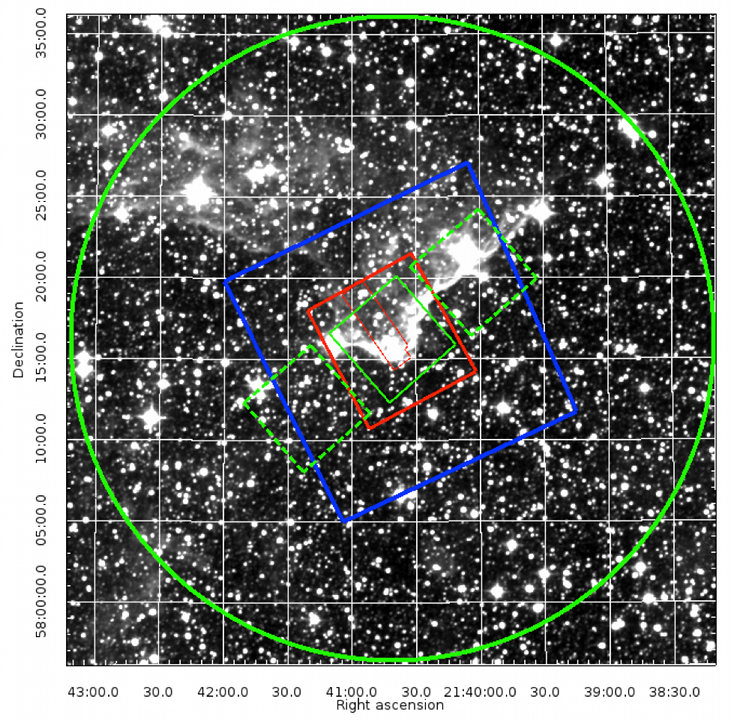Wendi's table of all data sources
Finding cluster members, originally known as "Luisa’s Table of Characteristics of Young Stars for Determining Cluster Members", may be of some interest.
The table
Wendi's table orignally included (data) source, type (wavelength), and reasoning. Anything else to add?
| Data source | Wavelength(s) | Why we should care | Additional notes on this data source |
| Getman et al. 2007 | |||
| Choudhury et al. 2010 | |||
| Chauhan et al. 2009 | |||
| Ogura et al. 2002 | Halpha = 6563 A | because young accreting stars are bright in Halpha | we have updated the coordinates for the BRC 38 sources listed. also note that they have finding charts of their sources, and the HH sources they have identified here. |
| Barentsen et al. 2011 | |||
| IPHAS | |||
| Nakano et al. 2012 | |||
| 2MASS | |||
| Beltran et al. 2009 | |||
| WISE | |||
| AKARI | |||
| Spitzer |
Areas covered (from our proposal)
Figure 4: This WISE-4 (22μm) greyscale image of the BRC 38 region (~40’ on a side) is the region of proposed study; the green circle is 20’ in radius (~40’ diameter). The central green square is the region covered by all four Spitzer IRAC bands. The green dashed-line square to the lower left is the serendipitous IRAC 2 & 4 (4.8 & 8 μm) data and the green dashed-line square in the upper right is the serendipitous IRAC 1 & 3 (3.6 & 5.8 μm) data. The red square shows the Spitzer MIPS -24 μm coverage and the red rectangle is MIPS-70 μm coverage. The large blue box in the center is the Chandra field of view for the observation discussed in Getman et al. (2007). The optical data from Chauhan et al. (2011), Choudhury et al. (2010), and Ogura et al. (2002) are largely within the region of IRAC 4-band coverage. The deep JHK data from Beltrán et al. (2009) are in a region comparable to the IRAC 4-band coverage.
